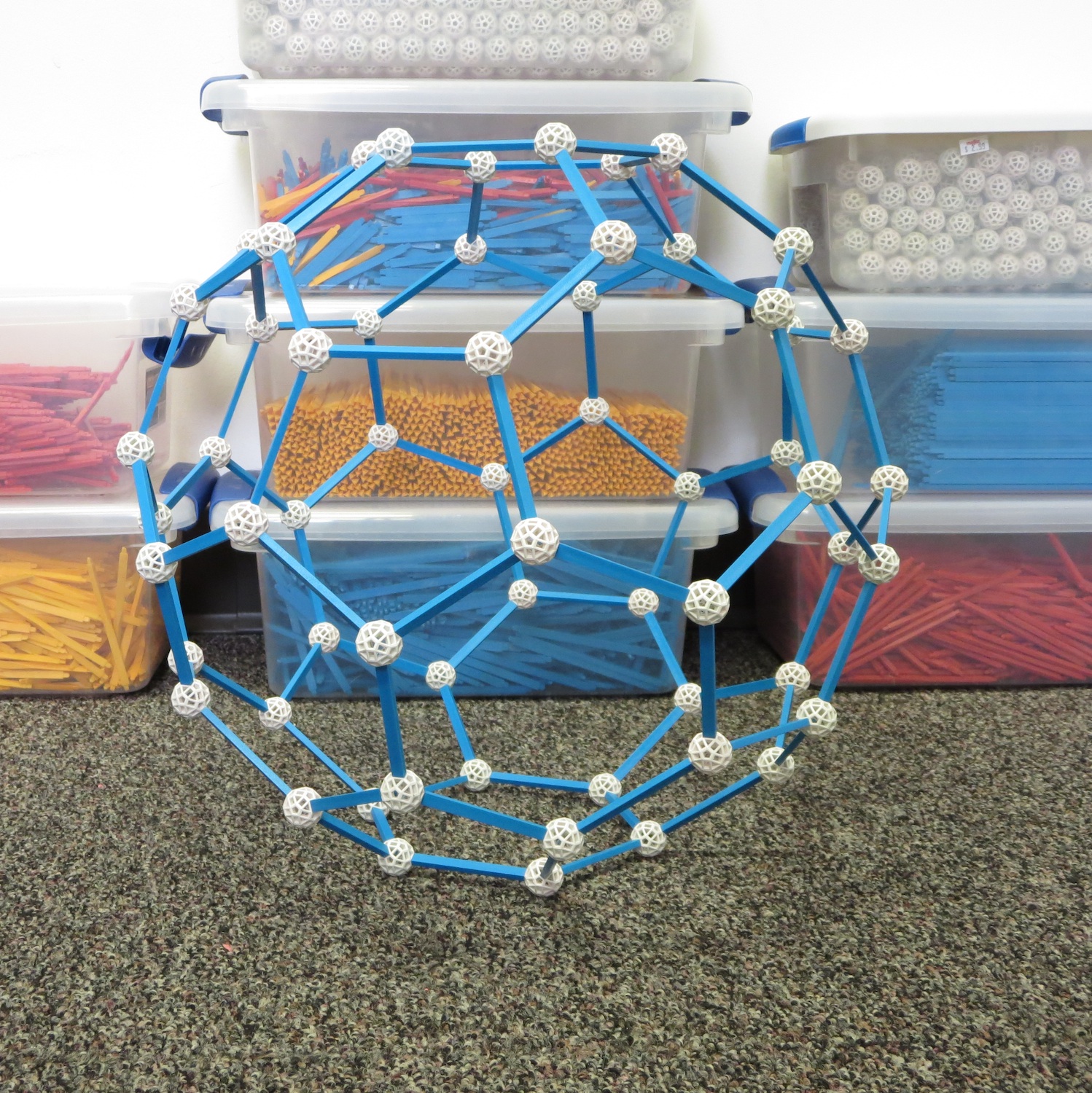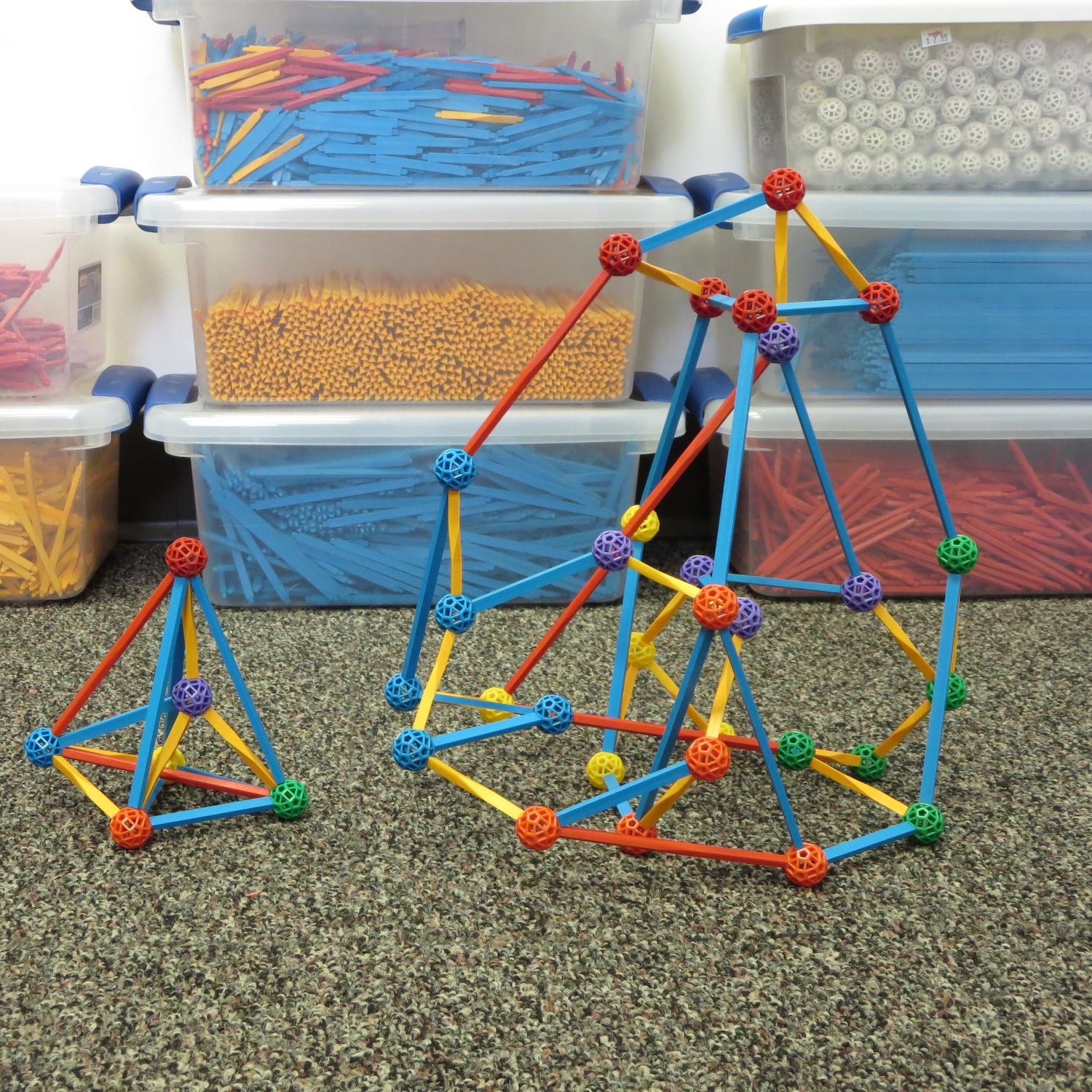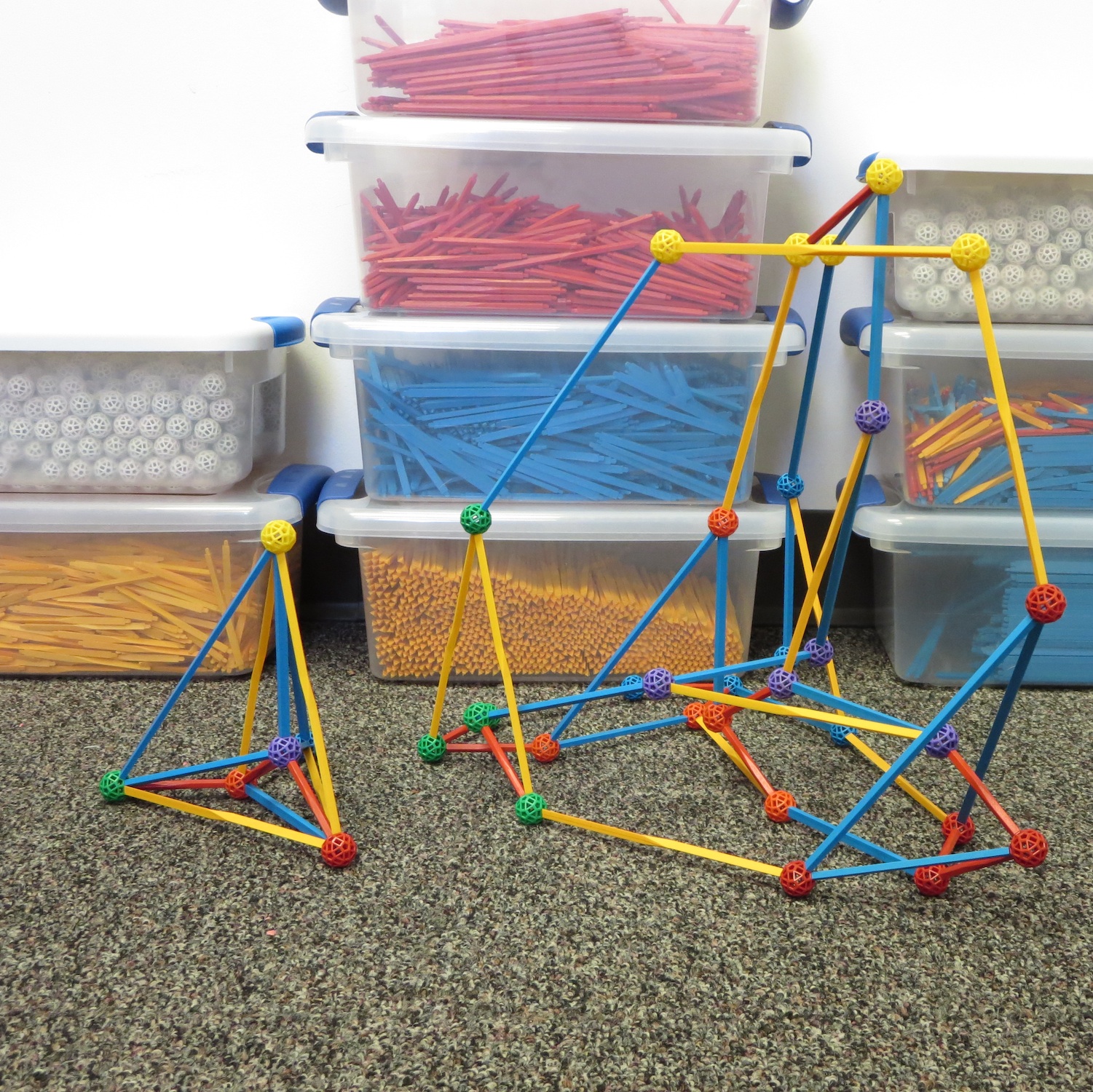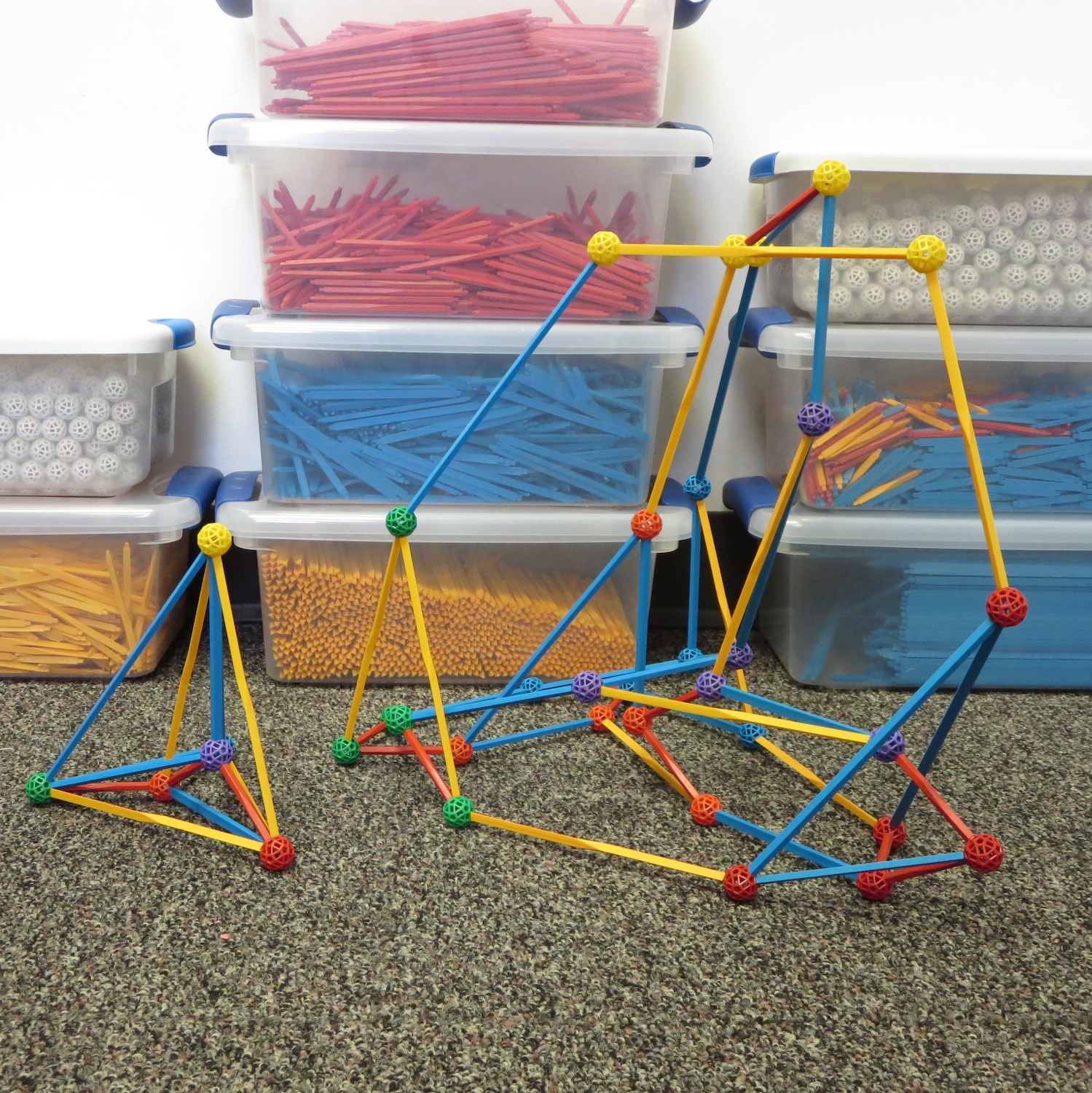The Hemi-Soccer Ball
|
Introduction. The polyhedron underlying the common soccer ball is a truncated icosahedron. It is an Archimedean solid consisting of 12 regular pentagons and 20 regular hexagons. One may make a model using Zome, using 90 identical blue struts and 60 connectors: |
|
|
|
|
|
One may also make a "hemi-soccer ball". Abstractly, this is defined by identifying points on the soccer ball with their antipodes. This is essentially the same trick for obtaining the real projective plane from the 2-dimensional sphere. Since the truncated octahedron is invariant under the antipode map, this is well-defined. The Zome model represents the 1-dimensional skeleton of this polyhedron. |
|
|
|
|
|
Some Details. Two models appear in the stereogram. The first is a Zome model of the complete graph K6 on six vertices. The second is the hemi-soccer ball. The complete graph K6 can be used as a guide for understanding or building the hemi-soccer ball. Notice that K6 uses 6 distinctly-colored connectors. Each single vertex of K6 corresponds to a cluster of 5 connectors of the same color in the hemi-soccer ball. Each commonly colored cluster is spanned by a non-planar pentagon. These 6 pentagons (half the number of pentagons in the soccer ball) are connected to each other via corresponding edges of K6. That is, for every edge of K6, there is a pair of pentagons in the hemi-soccer ball connected by an edge of that type. The hemi-soccer ball also has 10 hexagons. By some small miracle, the hexagons in this model are all flat (affinely spanning only a 2-dimensional space). The 57-Cell. In the 1970's and 1980's, Coxeter and Grünbaum (and others) studied two self-dual abstract regular polytopes, known as the 11-cell and the 57-cell. The 1-dimensional skeleton of the 11-cell is simply the complete graph K11 on 11 vertices, so a faithful Zome model would be neither interesting nor possible to build. One may regard the hemi-soccer ball as a "layer" of the 57-cell. Specifically, given any vertex of the 57-cell, there are precisely 30 vertices of distance 2 in the 1-dimensional skeleton, and the connectivity of these vertices coincides with that of the hemi-soccer ball. Linkless Embeddings of Graphs. The existence of a Zome model of the hemi-soccer ball makes one wonder if it is possible to make then entire 1-dimensional skeleton of the 57-cell using Zome, although it seems highly doubtful. According to a theorem of Robertson, Seymour, and Thomas, a graph has a linkless embedding in R3 if and only if it does not have a minor belonging to the 7-member Petersen Family. By construction, the Zome model of the hemi-soccer ball has a member K6 as a minor. One would be able to say this about every vertex of the 57-cell. Thus, a Zome model of the 57-cell would have 57 different copies of the hemi-soccer ball. This seems to be too many.... |
|
|
|
|
|
Reference.
|





